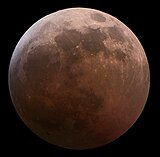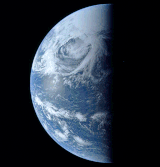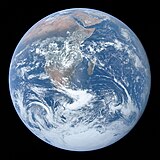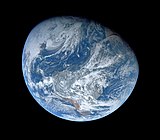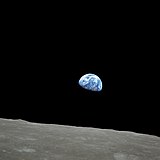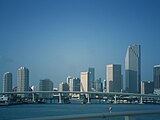-
December 2010 lunar eclipse
-
Apollo 13 view of Earth
-
Color-calibrated version of "The Blue Marble"
-
First full-disk image of Earth
-
Apollo 16 view of Earth
-
Earthrise
-
First view of both Earth and the Moon
-
Earth rotation during Galileo flyby
-
Sky during a forest fire
-
Miami during the 2000s
-
Vectorized logo of mental images
 | This is a Wikipedia
user page. This is not an encyclopedia article or the talk page for an encyclopedia article. If you find this page on any site other than Wikipedia, you are viewing a mirror site. Be aware that the page may be outdated and that the user whom this page is about may have no personal affiliation with any site other than Wikipedia. The original page is located at https://en.wikipedia.org/wiki/User:Aaron1a12. |
| — Wikipedian ♂ — | |||||||||||||||||||
| Country | |||||||||||||||||||
|---|---|---|---|---|---|---|---|---|---|---|---|---|---|---|---|---|---|---|---|
| Current time | Current time for UTC-5 is 16:27 | ||||||||||||||||||
| Education and employment | |||||||||||||||||||
| Occupation | Computer programmer | ||||||||||||||||||
| Hobbies, favourites and beliefs | |||||||||||||||||||
| Hobbies | Music composition, PC gaming | ||||||||||||||||||
| Religion | Jewish | ||||||||||||||||||
| Movies | Inception | ||||||||||||||||||
| Music | Igor Stravinsky, Gustav Mahler, Coldplay | ||||||||||||||||||
| Contact info | |||||||||||||||||||
| Website |
aaronescobar | ||||||||||||||||||
| Flickr | aaronescobar | ||||||||||||||||||
| GitHub | aaron1a12 | ||||||||||||||||||
| Account statistics | |||||||||||||||||||
| Joined | June 2006 | ||||||||||||||||||
| Userboxes | |||||||||||||||||||
| |||||||||||||||||||
I'm a programmer who always aspires to be a better person. I don't have much time to make meaningful contributions to Wikipedia, so I mostly just correct tiny mistakes I find.
I've been active on Wikipedia since 2007. I was a foolish wee lad back so please don't judge my old edits!
Restoration of The Blue Marble
In late 2021, after years of being slightly perturbed at NASA's original processing of Apollo 17 photograph AS17-148-22727, I took it upon myself to process the original film myself. Using a raw scan by the Arizona State University/NASA JSC and a scan from 2015 by Project Apollo/JSC, I color-calibrated The Blue Marble using a photograph of a KODAK color chart that was included in the 148/NN magazine. By this calibration process (and the fact that the folks at JSC simply did a better job 40 years later) one can better approximate what the astronauts actually saw when they took the picture.
After cropping and rotating the image (the original was allegedly taken upside down), voilà: The Blue Marble.
Color temperature

Due to the human eye's ability (technically your brain's) to automatically white-balance your vision according to your surrounding lights, the Earth would appear much warmer than how it is found in the Apollo photos. To find the right white balance, I used various ISS reference photos. Depending on your monitor, it may look just right (or not). However, to get the right impression of just how blue Earth is, you're gonna have to see it yourself!
Since you can't correct the white balance with film, that process was usually done in a lab, with chemicals. NASA's original attempt to balance the image resulted in Earth appearing purple-ish instead of blue. Modern digital processing can more accurately correct color temperature.
49 Years After

Every two hours the Earth Polychromatic Imaging Camera (EPIC) instrument on the DSCOVR spacecraft takes a full disk view of the Earth. Using 3D projection techniques available in every modeling package, I camera-projected a new image produced by the EPIC instrument onto a spherical object in order to unwrap the image. Then, after rotating the sphere to match the angle and tilt of the Earth as seen by the Apollo 17 crew, I was able to very closely super-impose the new image onto The Blue Marble. With the EPIC image, now viewed from the same angle as in the 1972's photograph, you can make some very interesting comparisons of the Earth 49 years later!
First thing I noticed was the sudden appearance of a new cluster of lakes near the Nile River in Egypt. Apparently, the Toshka Lakes were also discovered by astronauts in 1998. On December 7th, 2022, it will have been 50 years since The Blue Marble was taken, and this will be a great opportunity to re-create the famous photograph once again with the EPIC instrument, and it'll be in the same orientation as the Apollo 17 spacecraft so only minimal re-projection will be necessary. NASA, if you're reading... hint hint.
Some of my photographic contributions
 | This is a Wikipedia
user page. This is not an encyclopedia article or the talk page for an encyclopedia article. If you find this page on any site other than Wikipedia, you are viewing a mirror site. Be aware that the page may be outdated and that the user whom this page is about may have no personal affiliation with any site other than Wikipedia. The original page is located at https://en.wikipedia.org/wiki/User:Aaron1a12. |
| — Wikipedian ♂ — | |||||||||||||||||||
| Country | |||||||||||||||||||
|---|---|---|---|---|---|---|---|---|---|---|---|---|---|---|---|---|---|---|---|
| Current time | Current time for UTC-5 is 16:27 | ||||||||||||||||||
| Education and employment | |||||||||||||||||||
| Occupation | Computer programmer | ||||||||||||||||||
| Hobbies, favourites and beliefs | |||||||||||||||||||
| Hobbies | Music composition, PC gaming | ||||||||||||||||||
| Religion | Jewish | ||||||||||||||||||
| Movies | Inception | ||||||||||||||||||
| Music | Igor Stravinsky, Gustav Mahler, Coldplay | ||||||||||||||||||
| Contact info | |||||||||||||||||||
| Website |
aaronescobar | ||||||||||||||||||
| Flickr | aaronescobar | ||||||||||||||||||
| GitHub | aaron1a12 | ||||||||||||||||||
| Account statistics | |||||||||||||||||||
| Joined | June 2006 | ||||||||||||||||||
| Userboxes | |||||||||||||||||||
| |||||||||||||||||||
I'm a programmer who always aspires to be a better person. I don't have much time to make meaningful contributions to Wikipedia, so I mostly just correct tiny mistakes I find.
I've been active on Wikipedia since 2007. I was a foolish wee lad back so please don't judge my old edits!
Restoration of The Blue Marble
In late 2021, after years of being slightly perturbed at NASA's original processing of Apollo 17 photograph AS17-148-22727, I took it upon myself to process the original film myself. Using a raw scan by the Arizona State University/NASA JSC and a scan from 2015 by Project Apollo/JSC, I color-calibrated The Blue Marble using a photograph of a KODAK color chart that was included in the 148/NN magazine. By this calibration process (and the fact that the folks at JSC simply did a better job 40 years later) one can better approximate what the astronauts actually saw when they took the picture.
After cropping and rotating the image (the original was allegedly taken upside down), voilà: The Blue Marble.
Color temperature

Due to the human eye's ability (technically your brain's) to automatically white-balance your vision according to your surrounding lights, the Earth would appear much warmer than how it is found in the Apollo photos. To find the right white balance, I used various ISS reference photos. Depending on your monitor, it may look just right (or not). However, to get the right impression of just how blue Earth is, you're gonna have to see it yourself!
Since you can't correct the white balance with film, that process was usually done in a lab, with chemicals. NASA's original attempt to balance the image resulted in Earth appearing purple-ish instead of blue. Modern digital processing can more accurately correct color temperature.
49 Years After

Every two hours the Earth Polychromatic Imaging Camera (EPIC) instrument on the DSCOVR spacecraft takes a full disk view of the Earth. Using 3D projection techniques available in every modeling package, I camera-projected a new image produced by the EPIC instrument onto a spherical object in order to unwrap the image. Then, after rotating the sphere to match the angle and tilt of the Earth as seen by the Apollo 17 crew, I was able to very closely super-impose the new image onto The Blue Marble. With the EPIC image, now viewed from the same angle as in the 1972's photograph, you can make some very interesting comparisons of the Earth 49 years later!
First thing I noticed was the sudden appearance of a new cluster of lakes near the Nile River in Egypt. Apparently, the Toshka Lakes were also discovered by astronauts in 1998. On December 7th, 2022, it will have been 50 years since The Blue Marble was taken, and this will be a great opportunity to re-create the famous photograph once again with the EPIC instrument, and it'll be in the same orientation as the Apollo 17 spacecraft so only minimal re-projection will be necessary. NASA, if you're reading... hint hint.
Some of my photographic contributions
-
December 2010 lunar eclipse
-
Apollo 13 view of Earth
-
Color-calibrated version of "The Blue Marble"
-
First full-disk image of Earth
-
Apollo 16 view of Earth
-
Earthrise
-
First view of both Earth and the Moon
-
Earth rotation during Galileo flyby
-
Sky during a forest fire
-
Miami during the 2000s
-
Vectorized logo of mental images
